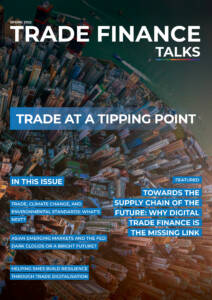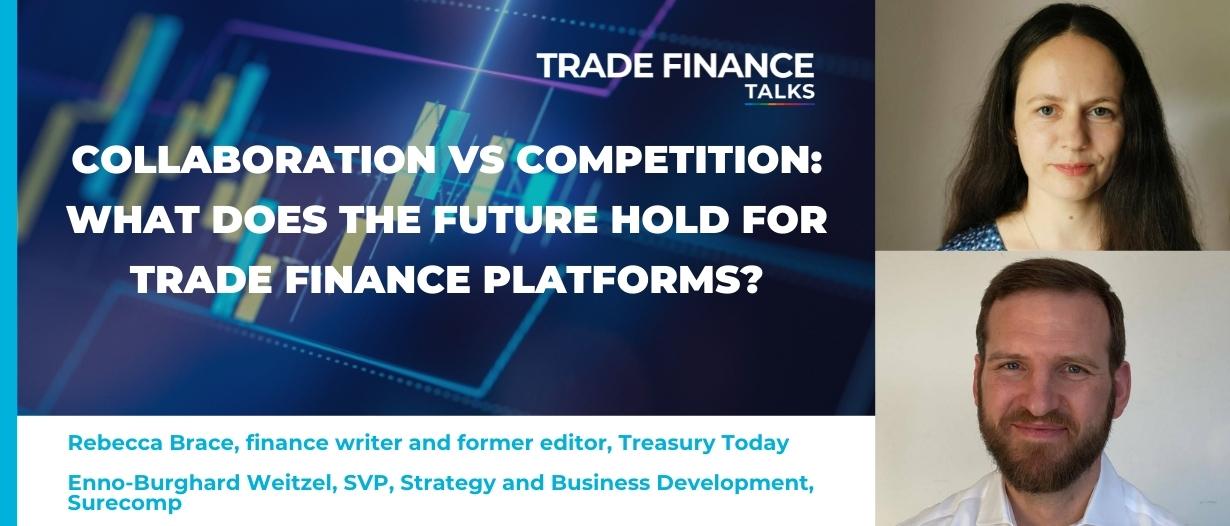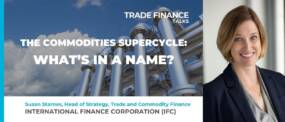Paper processes in trade finance have numerous drawbacks – but while digital solutions may be more convenient, they also lack interoperability. The solution is for fintech providers to focus on cooperation instead of competition, argues Surecomp’s Enno-Burghard Weitzel.
It’s no secret that the world of trade finance continues to be dominated by paper.
And while paper may bring clear disadvantages in terms of efficiency and convenience, there is a good reason for its prevalence, says Enno-Burghard Weitzel, senior vice president of strategy and business development at Surecomp.
“Paper may not be very convenient, but it is fully interoperable – it can be used by every jurisdiction, participant and system in the world,” he says.
“Any digital solution out there may be more convenient. But these solutions are not interoperable.”
In the quest for greater efficiency and convenience, more digital trade finance platforms are emerging.
While they have much to offer, these platforms tend to have overlapping value propositions, meaning that they are competing with each other for the same customers.
At the same time, says Weitzel, only a very small number of corporate customers have signed up to digital platforms – typically only the most tech-savvy early adopters.
“In Europe, there are roughly half a million corporations with more than 250 employees,” says Weitzel.
“The collective market share of all the trade finance platforms out there is less than 1% of this potential customer base.”
As such, none of these platforms are close to achieving critical mass, or even close to being certain that they will still be operating in five years’ time.
The connectivity question
There is a clear need for more connectivity between trade finance systems – but there are also complications to consider.
One is the lack of a generally accepted trade finance API, which means that any integration between a bank and platform needs to be built on a one-to-one basis.
And at this stage, there is no real business case for building these connections, as the cost of creating a connection outweighs the uncertain benefit of being connected to each platform.
In the future, it is likely that this will change as the adoption of trade finance platforms grows.
However, connectivity will continue to be a challenge in what continues to be a disparate market.
“If we talk to the banks, they typically have a preference for two or three of the platforms out there,” says Weitzel.
“But if you ask them how many platforms they expect to connect to in the future, they say it is not their choice – the corporates will decide which platforms they want to use, and ultimately banks will have to connect to all of them.”
Corporates, meanwhile, may need to work with three or four different trade finance platforms, depending on their business needs.
And, of course, companies that work with multiple banks may already need to use a number of banking portals to connect to all those banks.
Faced with this level of complexity, says Weitzel: “What corporates really want is one solution where they can manage all their trade finance businesses.”
From competition to collaboration
For Weitzel, there is a clear solution to the current situation. “We need to turn our attention away from the view that trade finance IT vendors compete against each other, and focus on the fact that there’s a fantastically big market to win if we collaborate and connect our solutions to each other,” he says.
As part of the collaborative effort, Weitzel highlights the importance of working together to define standard APIs.
With developments by SWIFT and the International Chamber of Commerce (ICC) not progressing quickly enough for adoption in 2022, Weitzel argues, “There should be a group of leading IT vendors that harmonise their APIs and just get going.”
At the same time, he says it is important that vendors like Surecomp open up their Software-as-a-Service (SaaS) solutions to provide a hub-and-spoke model that gives startup fintechs access to multiple banks via a single technical connection.
In this model, banks can likewise create a single connection to the vendor’s SaaS platform that enables them to access the growing trade finance ecosystem.
Key to this approach is understanding that collaboration and competition do not need to be mutually exclusive.
“When I speak to fintechs, I am very clear that if they connect to our cloud solution, they get this leverage – and at the same time, we will be competing with each other in certain areas.
“It is still preferable to collaborate, considering that there’s a big market out there to win – rather than defending our small share of the small pie that exists today.”
Specialist solutions
One benefit of common rails – in other words, standard APIs and a hub-and-spoke connection – is that anyone using those rails will be able to work more effectively with fintechs.
This, in turn, will mean banks can compete more effectively to provide the best solutions for their specific customer base.
“For one thing, the speed of innovation will increase,” says Weitzel. “Look at the automobile industry – 75% of the parts in a particular vehicle may come from different specialists.
“A huge car manufacturer could build tires on its own, but the industry collectively came to the decision that the innovation speed for tires would be higher if it was given to specialists.”
Weitzel believes the same specialist approach could be key to the development of trade finance technology.
“In the trade finance industry, we’re all currently doing everything on our own,” he says. “But in five years’ time, if you use a trade finance portal provided by a bank, underpinning that will be a number of fintechs that work seamlessly together.”
For banks, this approach could avoid the need to spend time, money, and resources building solutions in-house, meaning more effort can be focused on optimising customer service, maintaining market share and gaining competitive advantage.
“And by working with specialised fintechs, there is more opportunity for banks to increase the speed of innovation,” Weitzel concludes.
Read our latest issue of Trade Finance Talks, Spring 2022

 Australia
Australia Hong Kong
Hong Kong Japan
Japan Singapore
Singapore United Arab Emirates
United Arab Emirates United States
United States France
France Germany
Germany Ireland
Ireland Netherlands
Netherlands United Kingdom
United Kingdom






























Comments are closed.